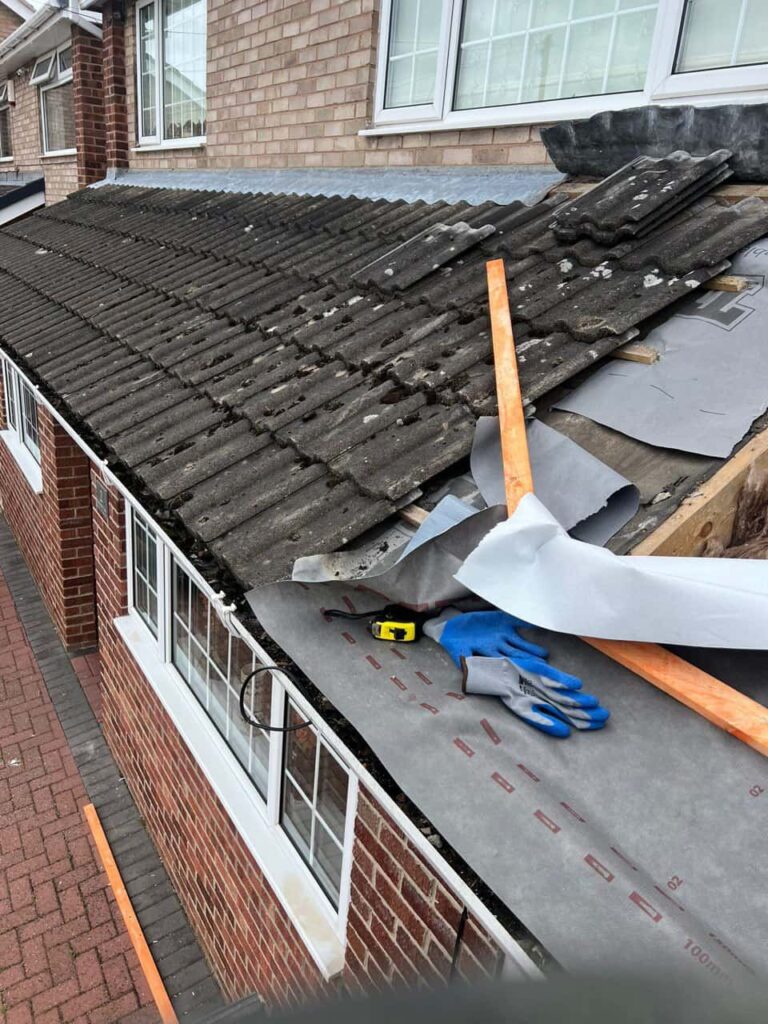Gable end roofs are a popular choice for both residential and commercial buildings, known for their distinct triangular shape and numerous advantages. One of the most appealing aspects of gable roofs is their versatility across different climates. Whether you are in a snowy region, a rainy area, or a hot climate, gable end roofs can adapt to a variety of environmental conditions, offering both aesthetic appeal and functional benefits. At Swanley Roofing Repairs, we understand the unique qualities of gable end roofs and how they can enhance your property in Swanley, Kent. In this blog post, we’ll delve into the versatility of gable end roofs and how they perform in different climates.
1. Gable Roofs in Cold Climates
In regions where heavy snowfall is common, gable end roofs are an excellent choice due to their steep pitch. The inclined surface allows snow to slide off easily, preventing accumulation that could lead to structural damage. This design also reduces the risk of ice dams forming, which can occur when melting snow refreezes at the eaves, potentially causing leaks and water damage.
Benefits:
- Efficient Snow Shedding: The steep angle prevents snow build-up.
- Ventilation Opportunities: Gable roofs often provide space for ventilation, allowing warm air to escape, which can help in preventing ice dams.
2. Gable Roofs in Rainy Climates
In areas prone to heavy rainfall, gable end roofs are beneficial due to their ability to efficiently direct water away from the building. The sloped design promotes quick drainage, minimising the risk of leaks and water pooling on the roof. Additionally, gable roofs can be equipped with adequate overhangs, further protecting the walls and foundation from water damage.
Benefits:
- Effective Water Drainage: The pitch allows rainwater to run off quickly.
- Protection Against Rot: The design helps keep the roof structure dry, reducing the likelihood of wood rot and mould growth.
3. Gable Roofs in Hot Climates
In hot climates, gable end roofs can contribute to improved airflow and ventilation within the building. The high ceiling created by the gable structure allows hot air to rise and escape, helping to keep the interior cooler. Additionally, gable roofs can accommodate larger overhangs, providing shade to windows and walls, which can help in reducing cooling costs.
Benefits:
- Natural Ventilation: The design promotes airflow, helping to regulate indoor temperatures.
- Energy Efficiency: Gable roofs can lower energy costs by reducing the need for air conditioning.
4. Design Versatility
Beyond their functional advantages in various climates, gable end roofs offer remarkable design flexibility. They can be adapted to fit various architectural styles, from traditional to contemporary, allowing homeowners to choose the look that best suits their preferences. Furthermore, gable roofs can be finished with various materials, such as shingles, tiles, or metal, further enhancing their versatility.
Benefits:
- Aesthetic Appeal: Gable roofs can enhance the overall look of your property.
- Customisation Options: Homeowners can select materials and finishes that reflect their style.
Conclusion
Gable end roofs are an incredibly versatile roofing option that can adapt to the demands of various climates. Their ability to shed snow, efficiently drain rainwater, provide ventilation, and offer design flexibility makes them an excellent choice for homeowners in diverse environments. At Swanley Roofing Repairs, we specialise in the installation and maintenance of gable end roofs tailored to the specific needs of your property.
Call us on: 01322 952 294
Click here to find out more about Swanley Roofing Repairs
Click here to complete our contact form and see how we can help with your roof.

